3D Depth Cues
Sunday October 30th 2011, 11:31 am
Filed under:
ConceptsMonocular
1. Motion parallax: distant things move slower; close things move faster.
2. Depth in motion: something coming closer to you gets bigger.
3. Perspective: parallel lines converge as they move away from you.
4. Familiar size: evaluating the position of an object whose size is known.
5. Relative size: comparing the position of an unknown object to one whose size is known.
6. Color and contrast: all else being equal, reds appear closer than blues, and high-contrast colors appear closer than low-contrast colors.
7. Accommodation: whether the eye is focused on a near or far object, as reported by our eye muscles.
8. Occlusion: an object blocking something else is assumed to be in front of it.
9. Depth of field: blurrier objects are assumed to be further away.
Binocular
10. Stereopsis: the difference between the views of the left and right eye.
11. Convergence: the angle from our eyes to the object viewed, as reported by our eye muscles (for objects closer than ~10m).
OBJ Batch Export
Saturday October 22nd 2011, 7:34 am
Filed under:
MayaHere’s how to export a sequence of frames from Maya as individual OBJ files:
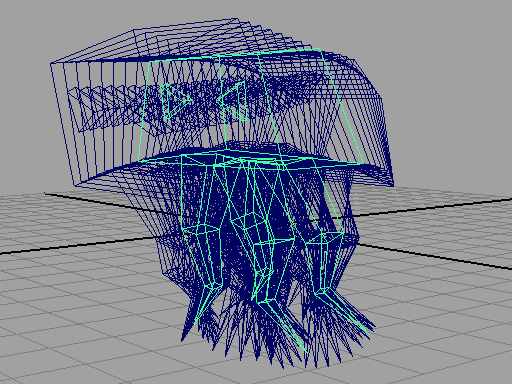
Step 1. Download this OBJ Exporter MEL script.
Step 2. In Maya, go to Window / Settings/Preferences / Shelf Editor to add the script as a button.
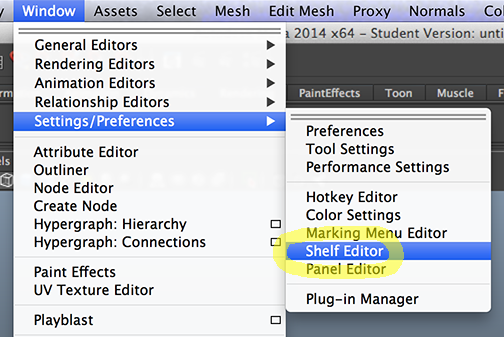
Step 3. Click the New Item icon to create a new blank button.

Step 4. Click the Icon Name icon to add a custom image for your button (included with the download).
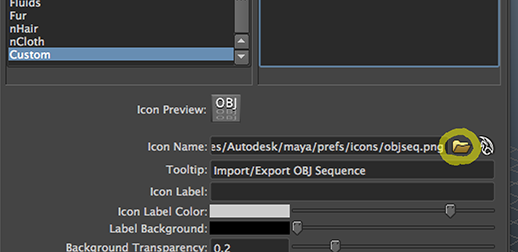
Step 5. Go to the Command tab and copy-paste the script in. Make sure the radio button is set to MEL, the language the script is written in.
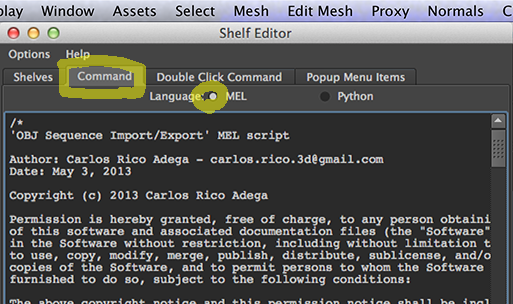
Step 6. Click Save All Shelves.

Step 7. The new button should now appear in your shelf. Click it…
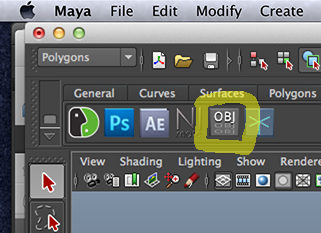
Step 8. …to open the OBJ batch export panel.
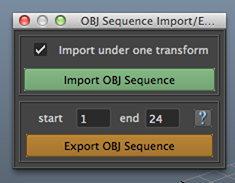
An OBJ sequence is a great way to do replacement animation with 3D printouts:

Format Suggestions
Tuesday October 04th 2011, 7:06 pm
Filed under:
Concepts1. Archival master: This is the copy you file away forever, in the highest quality available, and always in an “open” format that you can be reasonably sure will be available decades into the future. (That is, the format’s codec is open-source, or the patent’s expired). The highest-quality formats meeting these requirements can’t even be played back easily, or at all–they’re just for storage.
Recommendations for animation:
- picture: 3840×2160 or 1920×1080 @ 12fps, 23.976fps, or 24fps.
- sound: 48KHz 24-bit, stereo or discrete 5.1
- codecs: EXR image sequence (32bpc), TIFF (16bpc or 8bpc), or PNG image sequence (16bpc or 8bpc); uncompressed AIFF or WAV files.
2. Submaster: This is the copy you make from the master and work with day-to-day. It’s slightly smaller and lower-quality than the master, and might be in a proprietary format that’ll be gone within ten years, but it works great for now. (A high-quality HD video that plays back smoothly on older computers is still a relatively recent invention.) The submaster is also more convenient for creating legacy media like DVD or Blu-ray discs, if you need to.
Recommendations for animation:
- picture: 3840×2160 or 1920×1080 @ 23.976fps or 24fps.
- sound: 48KHz 24-bit, stereo or discrete 5.1
- codecs: Quicktime with Apple ProRes, GoPro Cineform, Avid DNxHR, or PhotoJPEG codec; PCM audio.
- 2021 note: Quicktime DV was a popular choice for SD master files, but—unlike DVD discs—DV tape hardware never had a widely interoperable standard for 24p video, using hacky workarounds specific to each manufacturer. So if you’re working with some legacy DV material, you’ll need to decode the master correctly, and then transcode to your submaster using a modern codec.
3. Distribution copies: These are the copies you make from the submaster and hand out to your audience. They’re much smaller and lower-quality than the submaster, but can be easily passed around and viewed on many devices.
Recommendations for animation:
- picture: 1920×1080@ 23.976fps or 24fps.
- sound: 48KHz 16-bit, stereo or 5.1.
- codecs: H.264 MP4 video; AAC or AC3 audio.
- 2021 note: H.264 is currently the established standard for distribution, thanks to its long-standing IP rights squabbles being largely resolved in 2013. Ironically, the same conflicts then ensnared its would-be successor format, H.265, which so far has only served to further entrench standardization on H.264.










